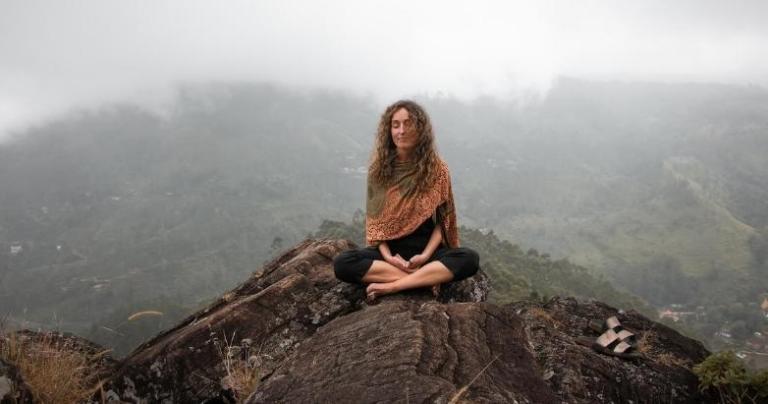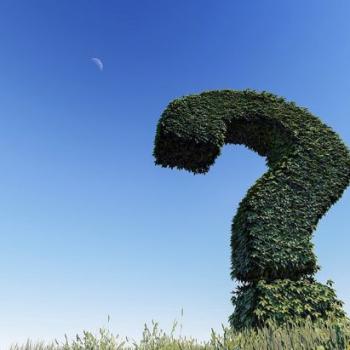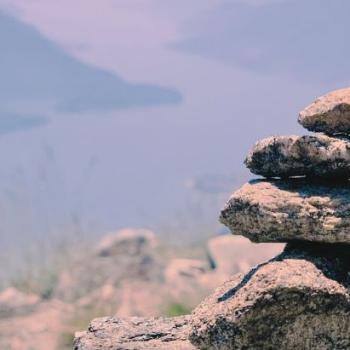
Raja means king or emperor. In the cultural context of ancient India, being king or emperor was the highest position an earthly man could hold. Raja Yoga is, therefore, the highest yoga. The practice of Raja Yoga is systematic, scientific and effective. The structure of Raja Yoga divides into eight limbs, which is why it is also called Ashtanga, ash meaning eight and tanga meaning limbs. The eight limbs are:
1. Yama
2. Niyama
3. Asana
4. Pranayama
5. Pratyahara
6. Dharana
7. Dhyana
8. Samadhi
Restriction and Discipline
The first two limbs, yama (control) and niyama (discipline), are yoga’s ethical guidelines. The ten guidelines (five each) were meant to help the practitioner live in harmony with nature and control animal instincts, making them similar to the Ten Commandments in Christianity. The practice of yama and niyama creates freedom for the practitioner because there is no freedom without discipline.
Let’s take the example of a car. The brakes are the discipline that gives us freedom. The car would be a deathtrap if we only had the gas pedal. The same is true about the banks of a river. They are the discipline that directs the water. Without the banks, there would be no river, only a sluggish quagmire.
The practice of yama and niyama is a lifetime endeavor. Few have reached perfection; therefore, striving for progress may be more effective than trying for perfection. For the practice to take hold, one needs perseverance, patience and tolerance towards oneself and others. Progress in this area can result in well-being, integrity and a stronger connection with spirit.
Steady Posture
The third limb, asana, was initially meant to prepare the body for meditation. Asana means steady posture, but in today’s society, it has become synonymous with the physical exercises that most people call yoga. In Patanjali’s Yoga Sutras, the original scripture of Raja Yoga, he writes that the body should be still while meditating. The original asana was the lotus pose; the practitioner sits with legs crossed, back straight and head, neck and spine in vertical alignment.
Expansion and Control of Energy
The fourth limb, pranayama, is primarily based on breathing exercises that allow the practitioner to gain more control over life energy. That is what the word prana means, life energy. The second part of the word can either be interpreted as yama, which means control, or ayam, which means expansion. Pranayama is, therefore, the expansion and control of life energy.
First Four = Hatha Yoga
Together these first four limbs comprise the practice of Hatha Yoga. Ha means sun, and Tha means moon, representing the masculine and feminine energies, strength and softness, yang and yin. Hatha Yoga aims to regulate the body’s energy flow, strengthen it, and prepare it for sitting still in meditation, prayer and contemplation. Hatha Yoga is also known as forceful yoga. In the same way fire is used to heat and strengthen clay, practitioners use Hatha Yoga to strengthen and fortify the bodies. Hatha Yoga also includes six cleansing techniques, shat kriyas.
Becoming a Turtle
The fifth limb, pratyahara, focuses on controlling the senses. Consciousness is constantly being drawn to the outside world by senses (sight, hearing, smell, taste and touch). Yoga philosophy likens the senses to five untamed horses that pull individuals in all different directions. We must gain control over our senses to draw attention and consciousness inward.
Unbroken Stream of Consciousness
The sixth limb, dharana, or concentration, is the starting point of meditative practice. Sri Yogi Hari says that an unbroken stream of concentration for two minutes automatically leads one into a meditative state.
Entering the State of Meditation
The seventh limb, dhyana, or meditation, is not an action or practice but a state that practitioners enter once they have made all the proper preparations. In that way, there is a strong link between sleeping and meditation. Sleep is a state. If you create the right circumstances, you will fall asleep. Still, you don’t argue with your friends about which method of falling asleep is the best. If you fall asleep, then your method works. The same is true for meditation. There is no one right way, but there are certainly wrong ways. A person who has trouble falling asleep can probably benefit from learning from someone who falls asleep easily. The same is true with meditation. It’s always good to learn from a seasoned practitioner.
Meditation is also called turyia or the fourth state. It is similar to a wakeful deep dreamless sleep because it is neither waking, dreaming, nor deep dreamless sleep and produces a different set of brainwaves than the other three states. It is a state of wakefulness void of dreaming (often referred to as the restless mind).
One way of thinking about pure consciousness is to liken it to the eye of a storm. When the storms of the body, emotions and mind seem to be taking over, the practitioner can revert to the eye of the storm through meditation, regain conscious contact with pure consciousness and establish peace of mind.
Enlightenment
According to Sri Yogi Hari, one enters into the state of samadhi, or enlightenment (the eighth limb), when the state of dhyana, or meditation, has been maintained uninterrupted for twenty to thirty minutes (times are not absolute, only indicators). To achieve permanent enlightenment, however, one must repeatedly enter the state of samadhi. Like a muscle must be stretched more than once or twice to achieve permanent flexibility, the meditative state must be entered into repeatedly to achieve a permanent state of realization or enlightenment.
Two Types of Enlightenment
According to yoga philosophy, there are two types of enlightenment.
One is called sarbij samadhi, or enlightenment with seeds, closely related to the idea of Karma Yoga, where each action produces a reaction or seed. When yoga practitioners reach sarbij samadhi, they continue to sow seeds with their actions and have to deal with the consequences in this life or the next. Thus the practitioners are still bound to the cycle of birth and death, even though they are constantly aware of the pure and unchanging identity (Atman).
According to the scriptures, however, the supreme goal of yoga is to be free from this cycle. In the state of nirbij samadhi, it is like the seeds of karma have been roasted, and actions no longer produce effects. In between sarbij and nirbij samadhi, there are at least seven stages.
Focus on the Foundation
These ideas about enlightenment are highly theoretical, and people at the beginning stages of yoga practice often get caught up in them prematurely. Since neither meditation nor enlightenment can be practiced as such, it is much more effective to focus on the practices leading up to these states and to cultivate the attitudes and practices related to Karma, Bhakti and Gnana Yoga for support.
Raja Yoga for Regular People
Raja Yoga is a time-consuming practice. It is not for everyone and to reach its higher stages demands a lifetime commitment. However, for those who want to use techniques from Raja Yoga for their health and overall well-being, I want to point out a progression taught by Yogi Shanti Desai.
1. In the beginning, the yoga practitioner should focus on taming the body with postures, include a few select breathing practices, and practice a short relaxation/meditation.
2. With time, the proportions should change. The physical exercises should take a shorter time and focus on maintaining strength and flexibility, while breathing practices should take more time, and meditation practices get more attention.
3. Once fully established in the practice of Raja Yoga, the practitioner should only do a few physical exercises, focus on the most effective breathing techniques and invest more time in meditation, effectively reversing the proportions from when he started.
Through this approach, the practice will inch towards more depth instead of ever-increasing focus on the physical body, which, according to yoga philosophy, is only a temporary reflection of the spirit, Atman.
Gudjon Bergmann
Author and Mindfulness Teacher
Amazon Author Profile
Recommended books:
- Monk of All Faiths: Inspired by The Prophet (fiction)
- Spiritual in My Own Way (memoir)
- Co-Human Harmony: Using Our Shared Humanity to Bridge Divides (nonfiction)
- Experifaith: At the Heart of Every Religion (nonfiction)
- Premature Holiness: Five Weeks at the Ashram (novel)
- The Meditating Psychiatrist Who Tried to Kill Himself (novel)
Picture: CC0 License
p.s. I have taught yoga since 1998. I studied with Yogi Shanti Desai and Sri Yogi Hari and am registered at the highest level with Yoga Alliance. This article was curated from my book titled Know Thyself: Yoga Philosophy Made Accessible
Read other articles in this series:
















